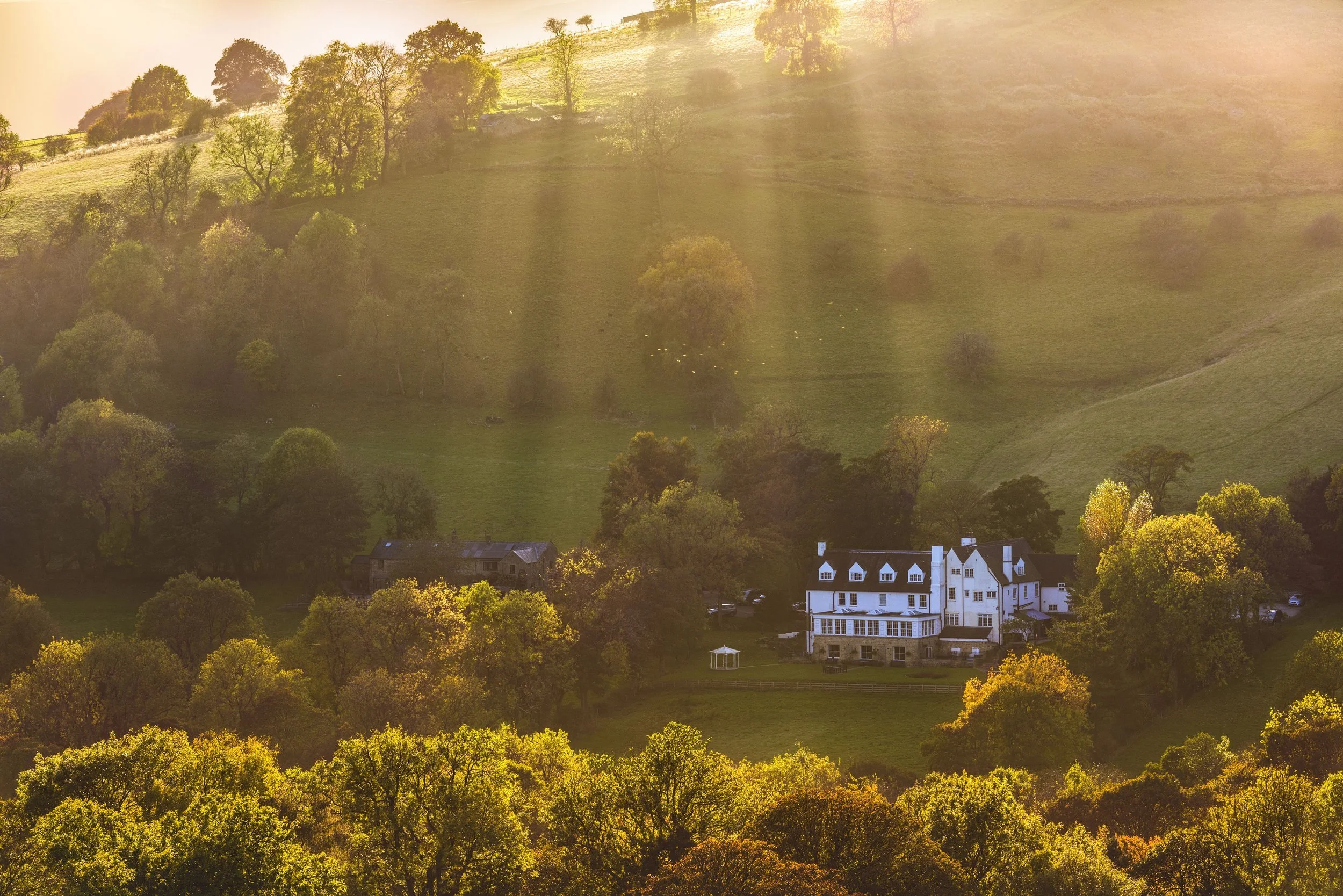If you stand on the terrace at Losehill House Hotel & Spa and look out across the valley, you’ll see two slopes rising like watchmen over the Hope Valley: Win Hill and Lose Hill. These hills, beautiful and unassuming to the casual walker, hold a story as old as England itself.
In the 650s AD, these two peaks became the stage for a bloody clash between rival kingdoms - Northumbria and Mercia/Wessex. History tells us the Northumbrians, stationed on what became known as Win Hill, secured victory, while Mercia’s forces, fighting from the opposite rise, were defeated - thus christening the landscape with the evocative names Win Hill and Lose Hill. Even today, as the wind rolls down from the ridges, it’s easy to imagine the clash of shields and the shouts of men who once fought for this ground.
It was here, on the footprint of an 18th-century farmhouse, that the Co-operative Holidays Association (CHA) built Losehill House in 1914. Unlike the grand country manors owned by aristocrats or the elite, Losehill was conceived as something entirely different: a place where ordinary people could experience the restorative power of the countryside. The CHA, a progressive movement in the early 20th century, believed everyone deserved access to clean air, exercise, and the joy of the great outdoors.
The house was built in the Arts & Crafts style, with thoughtful detailing and a natural harmony with the surrounding hills. Guests would arrive - often by train from Sheffield or Manchester - for affordable walking holidays. They slept in simple but welcoming rooms, ate hearty communal meals, and spent their days roaming the ridges of Mam Tor and Kinder Scout, following maps drawn by hand and advice shared by fellow travellers. At night, stories were traded by the fireside as the glow of the oil lamps flickered across the panelled walls.
Though more than a century has passed, the essence of Losehill remains. People still come for the views, the walking, and that feeling of the world slowing down. Of course, there are luxuries now undreamed of by those early ramblers: 22 individually designed rooms and suites, a heated indoor pool and outdoor hot tub, indulgent Thalgo spa treatments, and the award-winning two-AA Rosette Grafene Restaurant, where the best of Derbyshire’s fields, rivers, and forests meet refined, modern British cooking.
But beneath it all is the same soul that first drew people here in 1914: a place
where you can breathe deeply, stretch your legs, and reconnect with what really matters.
As we mark our 111th anniversary in 2025, we’re not just looking back on history. We’re celebrating what makes Losehill timeless: the landscape, the spirit, and the people who’ve walked through our doors for over a century.
We’re also unveiling a refreshed brand identity. The new look draws inspiration from the Arts & Crafts spirit of the house itself - from the arch motif based on our own doorway to a colour palette that reflects the muted greens, soft stone, and natural textures of the Hope Valley. Together with our new typography and refined logo, the design gives Losehill a timeless but modern presence, a natural evolution of a house that has always looked both backwards and forwards.
Celebrate With Us:
Book your 2025 stay and toast your own milestones - birthdays, anniversaries, or simply the joy of being here.
Enter our #Losehill111 Photo Competition: post your best Peak District or Losehill memory on Instagram, tag @LosehillHouse, and use the hashtag. One lucky winner will receive a luxury overnight stay for two or a fine-dining experience for two at Grafene.
Plan your visit and book now - become part of the story that started over a century ago.



